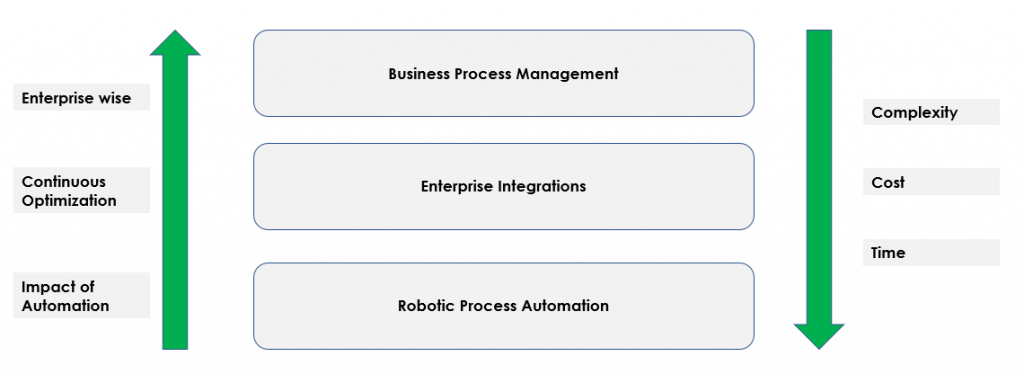Automation - What's the fuss?
Written by : Ovais Khan Chief Operating Officer MEA
February 23, 2021
While working with many customers I have noticed the non-integrated approach towards automation. There are many definitions, interpretations and manifestations of what are the essential ingredients of the automation journey. Where to start? What are the tollgates? Is there a defined map? How to ensure the direction of navigation? What should be the measurement criteria for success? What are the pitfalls and risks one must be aware of?
Answering all these questions is too big for the scope of this article. Let us answer the first question to break down automation into three key areas of business process management, integration and robotic process automation. Take a look at the following:

BPM projects bring in enterprise-wide adaptability and are associated with cultural change. This makes them costlier and time-consuming. Integration projects comparatively take less time to implement and are cheaper than a typical BPM implementation. However human human-centric tasks and user experience are the responsibility of channels and frontend apps. RPA projects are the fastest and cheapest and can be completed within a few weeks.
As we move from top to bottom; complexity, cost and time is decreased however scope of automation, nature of use cases and impact of automation on the overall enterprise get limited too. If you as an organization want to re-align your transformation strategy based on automation, think of these factors. All the 3 initiatives can run in parallel with different velocities and investment levels.
Innovation factors such as AI, IoT, and 5G have put us on the edge where the speed of transformation will define how close we get to redefining the plasticity of organizations and competing better.